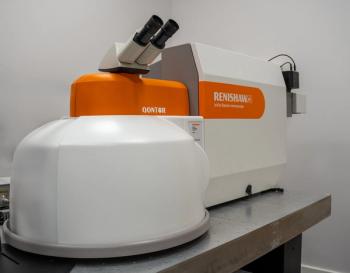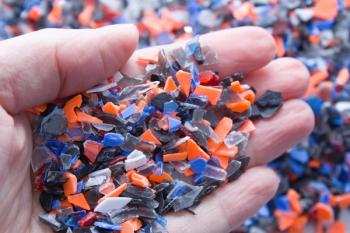
- April/May 2025
- Volume 40
- Issue 4
- Pages: 26–31
2025 Review of Spectroscopic Instrumentation
This product review covers products introduced from May 2024 to April 2025.
Pittcon was back on the east coast in 2025, held at a new venue at the Boston Convention and Exhibition Center. The Seaport district of Boston has changed dramatically over the past thirty years, evolving from an industrial seaport with fishing piers, parking lots, and industrial spaces to an area of luxury apartments, first class hotels, and corporate headquarters. Major companies now located in the seaport district include Vertex, AstraZeneca, Ginko Bioworks, and Eli Lilly. Add to that the companies located in Kendall Square a short train ride away, such as Moderna, Genzyme, and Biogen, and it is no wonder that Pittcon decided that Boston would be a good venue.
Last fall, I was having coffee with Heather Juzwa, the 2025 President for Pittcon, and I warned her that Boston weather could be fickle. Boston delivered on both ends of the weather spectrum, treating attendees to winter weather with highs of 25 °F on Sunday and Monday, and spring weather with highs of 55 °F on Wednesday and Thursday.
Attendance at the conference was good, with exhibitors commenting that there was more traffic than in the past few years. Organizers had a number of activities to attract attendees to the exhibit floor. Technical sessions were varied and well attended, and covered more topics than in the past. There were sessions on Analytical Chemistry in Art and Archeology, Entrepreneurs in Spectroscopy, and a number of sessions on the growing area of cannabis analysis. A number of short courses were given, and were also well attended. In the course I taught with a colleague Jeff D’Agostino on Fourier transform-infrared (FT-IR) spectroscopy, we were treated to students who were very engaged and curious, and willing to share their experiences with the other attendees.
Although in earlier days, Pittcon was the target instrument companies aimed for with new product introductions, that has changed and products are introduced year-round. This review will cover products introduced from May 2024 to April 2025, but Pittcon does give attendees a chance to see the new products or approaches.
Table I lists those companies that submitted information on new products, the type of product as well as the link to the company home page. As we did last year, we are providing tables with information on the products. We will not describe every entry in detail, but refer the reader to information in those tables.
Instrumentation
The mix of submitted products illustrated the changing markets. In the past, we divided the products by technology, but this year it was obvious that we had two different populations of instrumentation; laboratory and field/portable/handheld.
Atomic
Table II shows the single entry in the atomic spectrometry category. This instrument is a multi-collector ICP-MS designed with flexibility and versatility in mind. The unique design provides the user with the ability to customize each analysis and the high resolution multi collector capability can resolve isotopes of interest from their interferences.
Molecular
The molecular spectroscopy area is where we see the division between lab and field instruments most dramatically.
Fluorescence
This year’s fluorescence instruments are both designed for the laboratory, but with two very different end markets. Both instruments are shown in Table III. Edinburgh Instruments has introduced the FS5 v2 spectrofluorometer with increased performance and capabilities. According to the vendor, this instrument is targeted at the photochemistry and photophysics communities.
The second entry, from Horiba Instruments is the Veloci A-TEEM Biopharma Analyzer. This instrument capitalizes on the simultaneous collection of absorbance, transmittance and fluorescence excitation emission matrix (A-TEEM) of a sample. Due to the nature of the technique, it can provide an alternative to traditional separation methods. This new entry in the ATEEM family is particularly targeted to the biopharmaceutical market for analysis of monoclonal antibodies, vaccine characterization, and protein stability among other applications.
Ultraviolet/Visible
In this category (Table IV), we see the first divide between laboratory and field/portable instruments. Shimadzu has introduced two laboratory ultraviolet/visible (UV-vis) instruments, both of which equipped with software functions that will assure properly collected data.
For the handheld and portables, the entries are from Avantes, Metrohm, and Spectra Evolution, all companies that are well known in this technical area. Avantes introduced the AvaSpec ULS2034XL+, which better performance specifications than its predecessor.
Metrohm Spectro, the OEM arm of Metrohm, has introduced a clever R&D platform called the Discover-It-Yourself system that provides the flexibility for customers to swap out components to best address the current project need.
Finally, Spectral Evolution introduced the NaturaSpec Plus, a field UV-vis-near infrared (NIR) instrument that has additional features, such as real time video and Global Positioning System (GPS) coordinates that will make documentation in the field much easier.
NIR
Table V show the new near-infrared products and here every entry is a miniature or hand-held device designed to take the instrument to the analysis. Hamamatsu has introduced a new version of its micro-electro-mechanical systems (MEMS) FT-IR with an improved footprint as well as faster data acquisition speeds.
SciAps has a introduced a field vis-NIR instrument with some of the performance characteristics of laboratory quality instruments. Some of the applications for this instrument include agriculture, geochemistry and quality control especially in the pharmaceutical area.
We mentioned above that there are two parts to the Metrohm brand, one for original equipment manufacturers (OEM) and one for end users. Both have introduced new near infrared products. On the end user side, the OMNIS NIRS Analyzer is designed to be nearly maintenance free and has a number of features to make method development easier. On the OEM side, Metrohm Spectro has introduced the Sol HT spectrometer that has enhanced resolution and cooling capabilities to shorten acquisition times in a number of applications.
Mid IR
In past years, there was a mix of spectrometers and microscopes in this category. This year, there is a substantial change in that mix, so we chose to divide the category into spectrometers (Table VI) and microscopes that cover a variety of spectral ranges and technologies (Table VII).
The sole entry into the market in the mid infrared spectrometer category is the Bruker Vertex NEO platform. Bruker pioneered the vacuum FT-IR technology and the Vertex NEO Platform follow on from this. Incorporating a vacuum ATR accessory that has the sample at normal pressure but the entire optical path under vacuum, this feature removes the contribution from atmospheric interferences, a major concern for any scientist who studies proteins or works in the far IR. Other features include multiple detector positions and the ability to collect interleaved time resolved spectra.
Microscopy
Microspectroscopy has become increasingly important in the optical spectroscopy area. As application areas deal with smaller and smaller samples, the instrumentation must adapt to that reality. The five products described in Table VII operate on different instrument principles, and in different spectral ranges, but all are designed to deal with samples that would pose a problem for normal analyses.
Starting with the most traditional, Jasco and PerkinElmer have both introduced new microscope accessories for their FT-IR systems. In Jasco’s case, there are built in features to make analysis simpler, including auto-focus, the ability to use up to four detectors, and a feature called IQ IR NAV which will recognize the analysis target from the visible image.
PerkinElmer’s new entry, the Spotlight Aurora microscope offers both widefield and high-definition visible imaging, adaptive focus and depth tuning. Guided workflows simplify the analysis of contaminants, saving time. Many of the features found on the older Spotlight systems are available, and, according to a presentation to the press at Pittcon, more interesting features will follow during the year.
A less traditional microscope to the spectroscopist is a circular dichroism microspectrometer from CRAIC Technologies. This system relies on the differential absorption of left and right circularly polarized visible light by chiral molecules. Incorporated into a microscope platform, it supports acquiring CD spectra on micron size samples.
The last two members of this category are the LUMOS II ILIM and the Protein Mentor. The LUMOS, from Bruker is a Quantum Cascade Laser (QCL) based microscope that provided data from 1800 to 950 cm-1 to create images in transmission or reflection. It uses a room temperature focal plane array detector and acquires images at a rate of 4.5 mm2 per s. There is also a patented spatial coherence reduction feature to reduce speckle or fringing in images.
The ProteinMentor is another QCL based microscopy system operating from 1800 to 1000 cm-1, introduced by Protein Dynamic Solutions, Inc. It is designed from the ground up specifically for protein and protein containing samples unique to the biopharmaceutical industry. Unlike more general-purpose devices, this one provides the capability to determine protein and product impurity identification, stability information, or monitoring of deamidation processes.
Raman
In addition to the product mentioned under the fluorescence heading, Horiba introduced two new products in the Raman space at Pittcon, as shown in Table VIII. The first is the SignatureSPM, a scanning probe microscope integrated with a Raman/photoluminescence spectrometer. The target market for this new instrument is the materials market, including semiconductors, nanotechnology, and pharmaceuticals.
The second product Horiba introduced is the PoliSpectra, a rapid Raman plate reader designed to measure 96 well plates. The system is fully automated with liquid handling equipment and dedicated software to address the needs of the pharmaceutical and biopharmaceutical markets with tools to use in high throughput screening.
Metrohm introduced a new handheld Raman, the TaticID-1064ST. Aimed at the hazardous materials response teams, the system has the capability to provide the user with analysis guidance, and has features such as an on-board camera and note taking capability for documentation.
Microwave
It isn’t common to have an entirely new spectrometer debut at any conference. But BrightSpec debuted the first commercial product using broadband chirped pulse microwave spectrometer (see Table IX). The technique was developed in 2006, but, until recently, all instruments were custom built. BrightSpec provides a commercial platform to measure the microwave rotational spectrum of small molecules and unambiguously determine structure and configuration in the gas phase. This family of instruments has applications in academia, pharmaceutical, and chemical industries among others.
Accessories
Table X provides information on the accessories to spectroscopic instruments that have been developed. Invisible Light Labs, a startup out of TU Wein in Austria, has developed a nanomechanical based accessory for FT-IR that provides high sensitivity without cryogenic cooling, picogram detection and fast sampling.
Millipore Sigma has introduced the Milli-Q SQ2 series water purification system. This system delivers ultrapure water to the laboratory for a variety of uses, including sample preparation as well as preparation of buffers, mobile phases, and sample dilution.
Software
Software is as important as hardware in the modern analytical laboratory. Table XI details the latest releases here. The Moku Neural Network from Liquid Instruments is an field programmable gate arrays (FPGA)-based neural network that can be embedded into test and measurement instruments. It can provide enhanced data analysis capabilities, and also precise hardware control if used in that application.
Metrohm has introduced a Raman library of over 27,000 substances that will simplify the identification of material, especially for law enforcement and hazmat teams.
Two software products were introduced by Protein Dynamic Solutions, Inc., both designed to analyze infrared hyperspectral images. The AmiCQ is designed to evaluate therapeutic proteins and asses the risk of deamidation, while IdCQ evaluates intact therapeutic proteins in their formulations, and provides both identification as well as impurity assessment.
Wiley has introduced three new products this year. The first, KnowItAll 2025 adds features to enhance data management, streamline analysis and automate LC-MS analysis. Two other introductions from Wiley capitalize on the growing applications of artificial Intelligence or to the analytical chemist, the use of chemometrics. The first is drug classification models that can help users classify spectra even when no reference spectra are available. This tool will help forensic scientists to classify spectra that are not in the libraries. Finally, the SmartSpectra database collections, two collections of predicted spectra developed based on Wiley’s extensive empirical databases, will aid the analysis of unknowns and provide information to help identify materials not in the databases.
Components
Components may not seem thrilling as far as new products go, but, without introductions of these, the instrument developers might not be able to put their new products on the market. Table XII lists the components new for this year.
HÜBNER Photonics has introduced a new laser tailored for Raman and operating at 488 nm.
Liquid Instruments has introduced a time and frequency analyzer, which could be used for fluorescence lifetime or pump-probe spectroscopy. The system can also be used for LiDAR applications.
NLIR has introduced two components to the market. The first is a TOUCH interface fiber coupled optical interface for reflection measurement to be used with any of the NLIR spectrometer. The second component is a light source operating in the 1-to-10-μm range, with a working distance of 150 mm, designed to be used on both stationary as well as moving samples.
Trends and Conclusions
As in past years, the trends indicate that higher sensitivity, more automation, faster analysis times, and specialized workflows to address individual markets, are all at the top of the features list for new instruments. Applications of machine learning are also pushing into the instrument market. There is also an increasing interest in analyzing smaller samples. Microplastics are of increasing concern, and nanomaterials continue to be of interest.
These trends are not changing; neither is the need for the user to understand the instrument, how it works, what good data looks like, and why bad data is bad.
I have seen data published in peer reviewed journals that was poor at best, and downright wrong in other instances. I believe that this is in part due to the lack of knowledge from some reviewers on particular techniques. The reviewer may be an expert in the technical area of interest, but not be an expert in the tools used to generate the data for that particular area. Science has become highly interdisciplinary. Spectroscopists can be found in biomedical, electrical, or materials engineering;they practice in medical schools and at NASA. In many cases, the path was from the technique to the technical area, but, in others, the path was from the technical area to the technique.
Another major cause is that unless you can “Google it,” it does not exist. The basic science underlying many of our analytical instruments was developed in the last century, and although introductory texts may have basic information, key information may only be available in the peer reviewed literature of that time, which is most likely behind a paywall. Instrument vendors provide resources, but many times it is on how to use the device, not what the theory and results are.
In the past reviews, this author has cautioned against the “black box” mentality. Education on how instruments work, what the data should look like, and what it means are critical. I have pointed out the role that conferences, professional societies, and publishers play in the education of the user base. That role needs to continue to assure the ongoing health of this important technical area.
If your organization plans to introduce a new product after this article appears, please submit the 2025 Spectroscopy New Product form located at
Articles in this issue
8 months ago
The Big Review VI: Carbonyl Compounds8 months ago
Vol 40 No 4 Spectroscopy March 2025 Europe PDFNewsletter
Get essential updates on the latest spectroscopy technologies, regulatory standards, and best practices—subscribe today to Spectroscopy.



